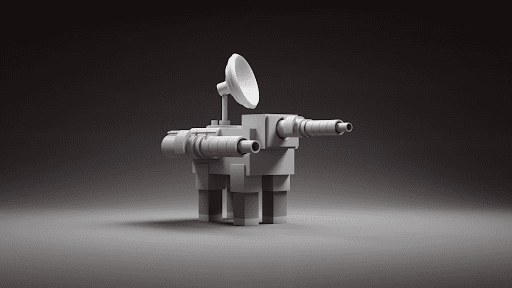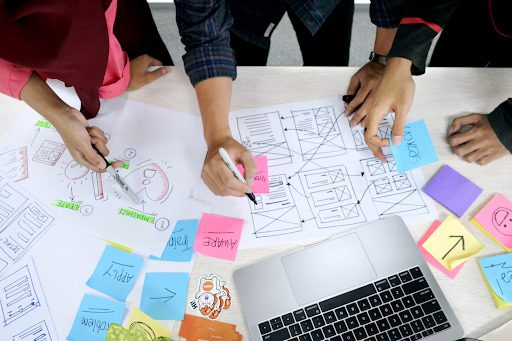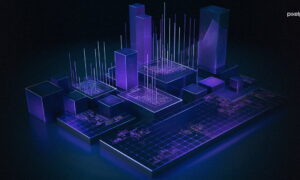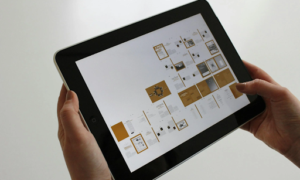A prototype serves as the first form or model of a new product. As such, it allows businesses and engineers to test the design and functionality of their products before they bring them to market. Depending on the type of product, prototypes can be validated with selected groups, wider audiences, and test runs before the final version is made available to the public, as a result, they play a crucial role in both the design and development process of the final product.
At a closer glance, a prototype can take different forms depending on the industry. For example, to an industrial designer, it may serve as an appearance model that doesn’t depict any functional characteristics. For an interaction designer, it may be a simulation of a user interface. Manufacturers, on the other hand, may use rapid prototyping to develop a fully functional model that can be tested and iterated before being turned into a final product.
No matter the scope and capabilities of the prototype, these early model designs are used for evaluation and exploration in nearly every field. To illustrate why prototypes are a valuable part of the product creation process, let’s look at the role they play in visualization and development.
Product Visualization
The design process typically starts with a product opportunity, after which the prototype is built to explore how useful and desirable that product is, how it can address the users’ needs, and how it can be made more attractive. Designers can then address these questions by exploring the physical characteristics through visualization.
In the early stages, these visual models are often sketches or drawings, but a more sophisticated method involves 3D product visualization that allows designers to visualize the model in its entirety and as a complete virtual replica. Such prototypes can be fully scalable, viewed in virtual reality, and made as interactive products in real-life spaces. Therefore, these visual techniques allow designers to explore the context and experience related to product use.

3D visualization has applications in numerous industries, ranging from construction and real estate to furnishing and automotive design. It can be especially useful for products that would otherwise be too expensive or difficult to replicate, such as building constructions, where a real-life version can be designed in a virtual space. Whatever the scenario is, visual prototypes help identify design anomalies or setbacks, allowing designers to quickly rule out any unfeasible elements.
Product Development
Product design failures during the development stage – and especially after – can lead to huge losses in the form of labor hours and material investments. That is why companies, designers, and engineers use prototypes to not only test how the product looks but how it performs. This reduces any usability risks or even manufacturing issues before continuing with production.
As development advances and the process moves from exploration to refinement, 3D concepts are often developed into physical prototypes – if the product in question is tangible. These can be made using a variety of processes, from 3D printing to machining to metal forming. They can be referred to as learning prototypes, as they are used for discovering what works and what doesn’t, how certain features perform, and how the internal components are arranged – down to the smallest mechanisms.

For more complex product designs, organizations may spend time doing extensive prototyping to continuously refine the product, reduce any performance risks, and demonstrate possible solutions and tools to potential clients. The changes can be developed on different levels, from unfinished parts to final functional prototypes that reflect product intent. In this way, prototyping can improve product development by offering new solutions, gathering feedback, and saving important time.
Advantages and Disadvantages of Prototyping
With its extensive capabilities in product visualization and development, prototyping has applications in almost every industry and can be a tremendous asset for the design and adaptation of products. Nonetheless, it’s not the ideal option for every project and should be considered with both its potential and limitations before being taken on as part of the development process. To that end, there are several advantages and disadvantages that organizations should consider before choosing to develop a prototype for their projects.
Advantages
- Faster time to market;
- Reduced costs, since models can be fully evaluated and adapted before the launch instead of recreated after;
- Real-time feedback on the direction and functionality of a product;
- Quick iterations with A/B testing;
- Ability to identify design anomalies with speed and precision;
- Improved user features and increased user involvement.
Disadvantages
- Possibly high initial costs for computational tools and training, depending on the complexity of the product;
- Often requires highly skilled and experienced engineers;
- Focusing on a limited prototype can distract developers from other solutions, incomplete specifications, or may lead them to develop projects that are hard to maintain;
- It may result in excessive development time that runs over budget and time.
Final Words
By providing full-scale and functional models of products, prototypes provide the look and feel that users and developers need to understand a product’s capabilities. The process thus allows companies to extensively test different features, manufacturing methods, and user experiences before moving towards production.
The feedback and analysis gathered from prototyping are essential, even necessary, for developing and launching a successful product. If you want to create innovative products that correspond with user preferences and needs, it might be time to incorporate prototyping in your product visualization and development processes.



































